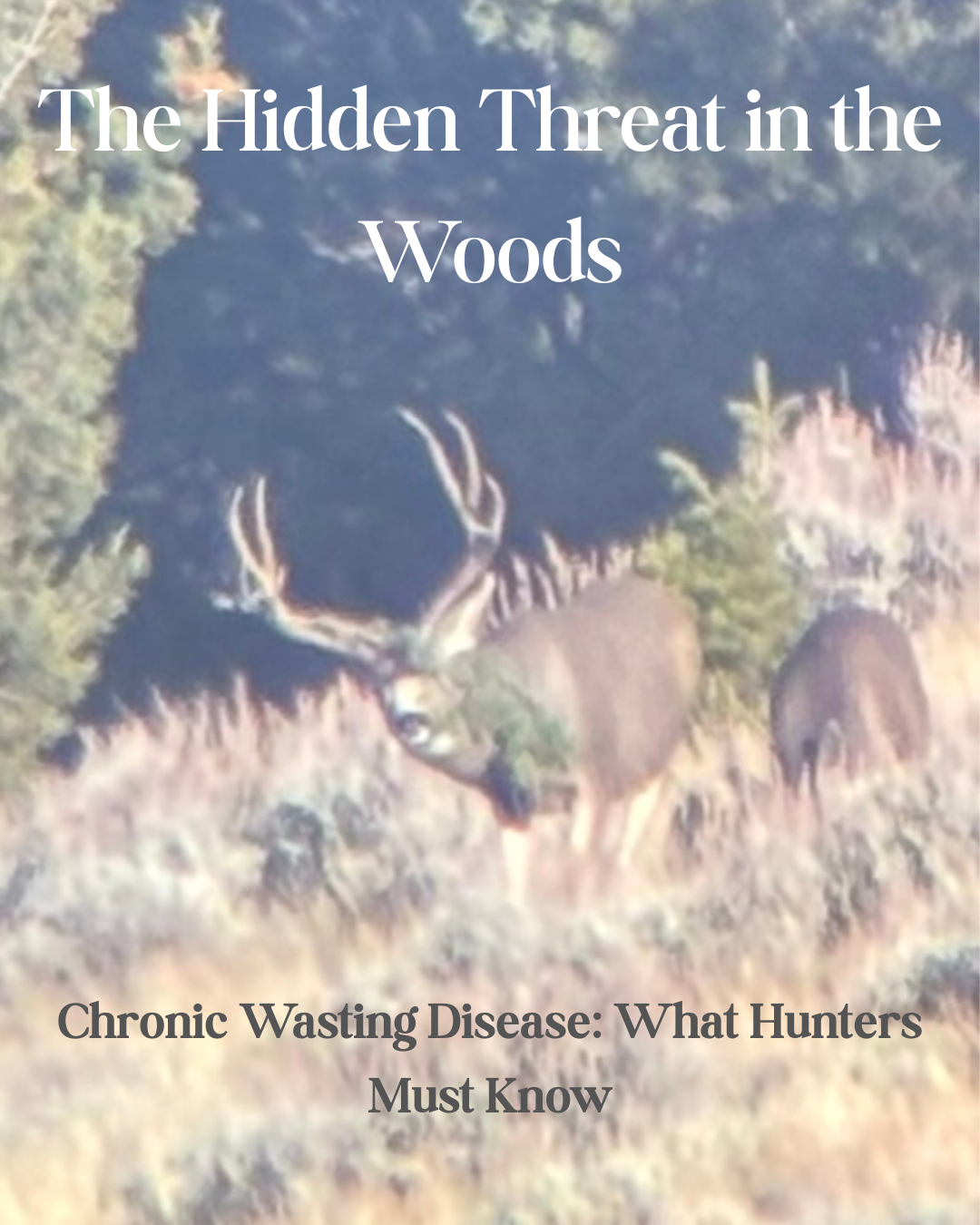Welcome to the Deadnuts Outdoors Weekly!
Hi guys and gals!
Welcome to the inaugural Deadnuts Outdoors Weekly, your source for in-depth insights into the hunting world. Each week, we’ll tackle a single topic critical to hunters like you—whether you’re chasing game with a rifle, bow, or muzzleloader. Our goal is to arm you with knowledge to navigate challenges, adapt to changes, and thrive in the field. For Week 1, we’re diving into a pressing issue affecting deer hunters nationwide: chronic wasting disease (CWD) and its implications for the 2025 season and beyond.
Chronic Wasting Disease: A Growing Threat to Deer Hunting
Chronic wasting disease (CWD), a fatal neurological disorder affecting deer, elk, and moose, is reshaping deer hunting across the U.S. First identified in Colorado in the 1967, CWD has spread to at least 35 states and four Canadian provinces by 2025, with prevalence rates in some areas exceeding 40% in mature bucks. Caused by misfolded proteins called prions, CWD spreads through direct contact, saliva, urine, and contaminated environments, posing a long-term threat to deer populations and hunting opportunities.
Why CWD Matters to Hunters
CWD isn’t just a wildlife issue—it’s a hunting issue. High prevalence can lead to declining deer herds, stricter regulations, and reduced hunting opportunities. In states like Wisconsin, Wyoming, and Pennsylvania, CWD hotspots have triggered mandatory testing, carcass transport bans, and even localized season closures. For hunters, this means adapting to new rules, rethinking strategies, and playing a role in slowing the spread.
Key Impacts for 2025:
-
Population Declines: In heavily affected areas, CWD reduces survival rates of mature bucks, shrinking trophy opportunities and altering herd dynamics. For example, studies in Wyoming show infected herds with up to 20% lower annual growth rates.
-
Regulatory Changes: States are tightening rules. Colorado now requires mandatory CWD testing in certain units, while Michigan bans baiting in CWD zones. Check your state’s wildlife agency website for 2025 updates.
-
Hunter Perception: Public concern about CWD’s potential (though unproven) risk to human health is fueling anti-hunting sentiment, which could pressure lawmakers to restrict seasons or access.
Strategies for Hunting in CWD-Affected Areas
Experienced hunters know preparation is key. Here’s how to adapt your approach in CWD zones without sacrificing success:
-
Scout Smarter, Not Harder
CWD alters deer behavior. Infected deer may show reduced wariness, congregate near water, or move erratically, making traditional patterns less reliable. Use trail cameras to monitor real-time movement, focusing on water sources and transition zones between bedding and feeding areas. Deploy multiple cameras to cover larger areas, as CWD can scatter herds. -
Master Carcass Handling
Prions concentrate in the brain, spinal cord, and lymph nodes, so proper field dressing is critical. Follow these steps: -
Wear gloves and avoid cutting through the spine or brain.
-
Debone meat in the field to minimize transport of high-risk tissues.
-
Check state regulations for carcass disposal. Many states now require hunters to use designated drop-off sites to prevent environmental contamination.
-
Test every harvested deer in CWD zones. Most states offer free or low-cost testing, with results in 2–3 weeks.
-
Adapt to Baiting and Feeding Bans
Many CWD zones ban baiting and supplemental feeding, as these practices concentrate deer and spread prions. Shift to natural attractants like mock scrapes or scent lures (where permitted). For example, create a mock scrape by clearing a 3-foot patch under an overhanging branch and applying RAISED SCENTS (which is what we use) to draw in dominant bucks. -
Support CWD Management
Hunters are critical to controlling CWD. Participate in state programs like targeted culls or increased doe harvests in high-prevalence areas. These efforts reduce herd density, slowing disease transmission. Plus, filling an extra tag helps manage populations while keeping your freezer stocked.
The Bigger Picture: Conservation and Advocacy
CWD threatens the future of deer hunting, but hunters can be part of the solution. Engage with your state’s wildlife agency to stay informed and provide input on management plans. Join organizations like the Quality Deer Management Association (QDMA) or the National Deer Association, which advocate for science-based CWD strategies. Your license dollars already fund CWD research through the Pittman-Robertson Act—consider volunteering for local monitoring efforts to amplify your impact.
Looking Ahead
CWD isn’t going away soon. Prions persist in soil for years, and no vaccine or cure exists. However, advances in testing (like rapid field tests in development) and genetic research (identifying resistant deer strains) offer hope. For 2025, focus on staying informed, adapting your tactics, and advocating for sustainable hunting. By acting now, we can help preserve deer hunting for future generations.
Community Callout: Your CWD Experiences
Have you hunted in a CWD zone? How have regulations or deer behavior changed your approach? Share your stories, strategies, or concerns with us by replying to this email or tagging us on social media with #deadnutsoutdoorsweekly. We’ll feature some of your insights in a future newsletter to keep the community connected.
A Note from the Deadnuts Team
At Deadnuts Outdoors, we’re passionate about helping hunters prepare for the field. Our 2D archery targets are built to sharpen your shot placement, whether you’re a bowhunter or sighting in a rifle. Visit Deadnutsoutdoors.com to explore our lineup and train for success this season.
Good luck this season,
The Deadnuts Outdoors Team
www.deadnutsoutdoors.com | Follow us on Instagram | Facebook | YouTube | TikTok


